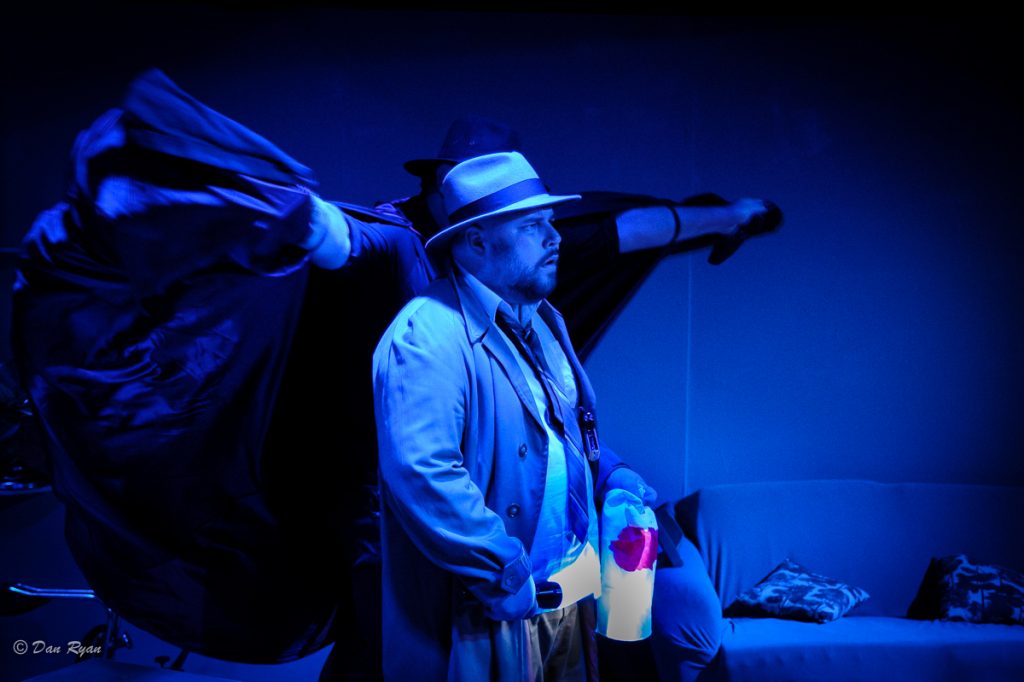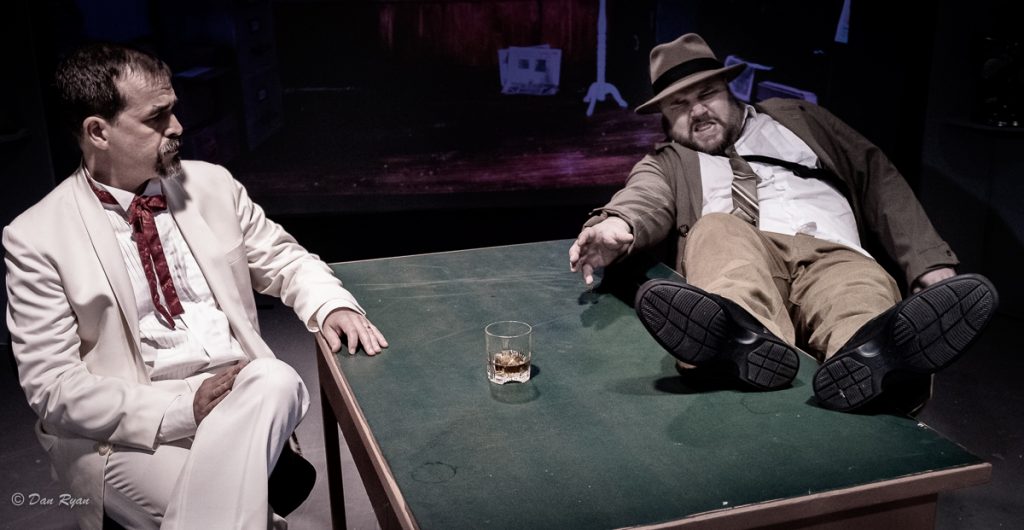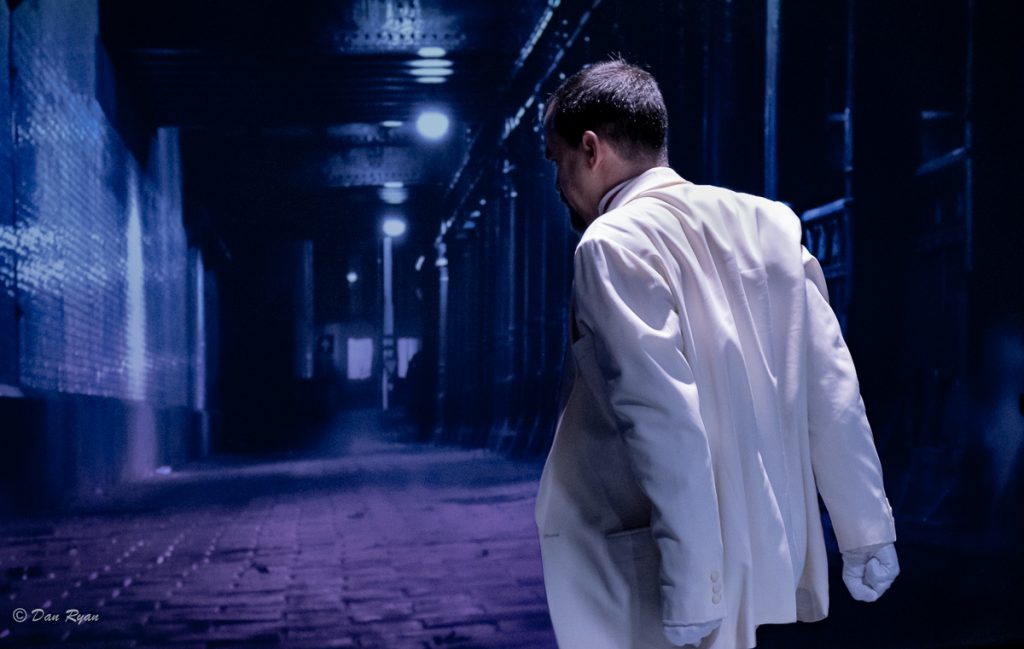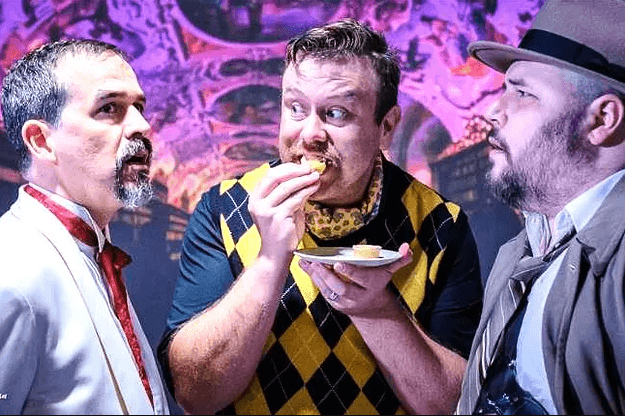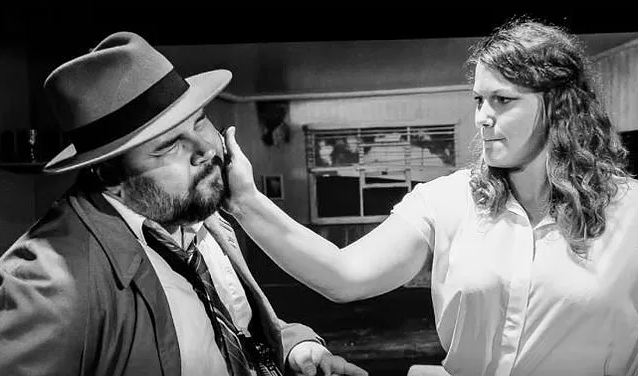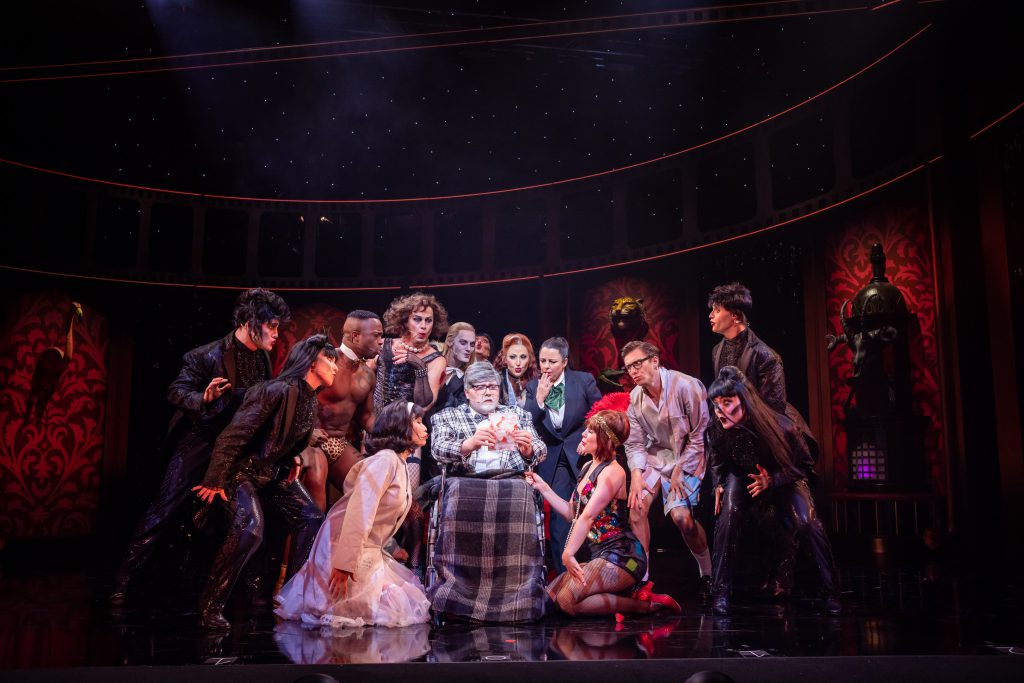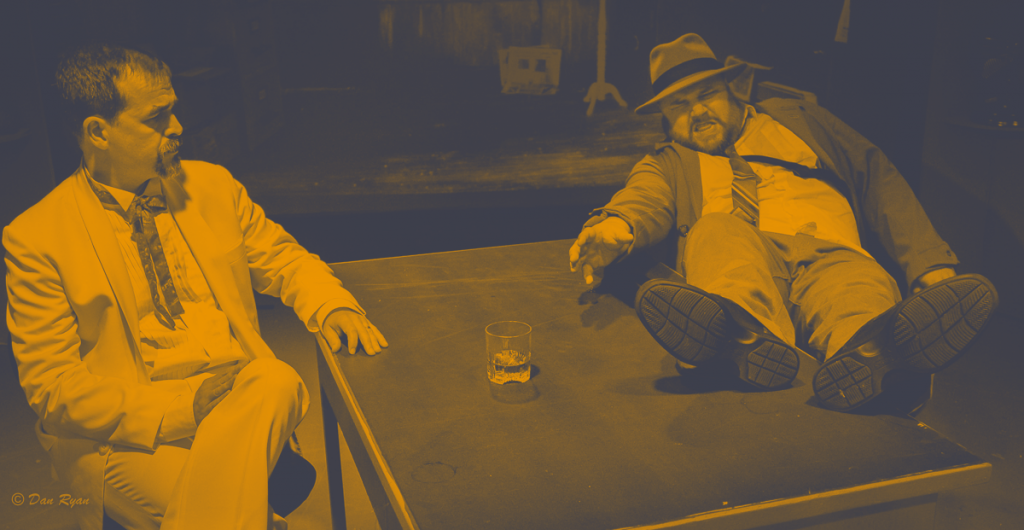
‘Pulp’ // Centenary Theatre Group
‘Pulp’ was eccentric.
In a darkened room at the Chelmer Community Centre, Joseph Zettelmaier’s play ‘Pulp’ was brought to life by Centenary Theatre Group. The opening night performance was almost sold out, and audiences were rushing to get the best seats.
Written by Michigan-based playwright Joseph Zettelmaier, ‘Pulp’ is set in Los Angeles in 1933 and follows PI Frank Ellery investigating the murder of a literary agent. His suspects are his four remaining clients, and writers for various pulp magazines; Desiree St. Clair, a femme-fatale romance writer, Bradley Rayburn, a geeky sci-fi writer, Walter Kingston Smith, a wealthy ‘’ladies’ man’’ and superhero writer, and the serious R. A. Lyncroft, a horror writer.
Zettelmaier has been praised for his ability to combine a plethora of genres – noir, romance, comedy, adventure, horror, and science fiction – into a single two-hour play. ‘Pulp’ received a National New Play Network Rolling World Premiere, which played at The Phoenix Theatre in Indianapolis, Williamston Theatre in Michigan, and the Know Theatre in Cincinnati to well-received audiences. For Centenary Theatre Group, the production presented the comical whodunnit consistently.
Direction by Cam Castles provided a smooth running play. The scenes themselves were thought out well with excellent use of space, blocking, and beats. With the addition of the actors’ portrayal of their respective characters, the scenes flowed very naturally and drew the audience into the story. Castles’ direction of the delivery of the script showcased each actors’ talent. The direction alongside lighting, sound, set, and costume design, created an atmospheric stylish comedic play with modern elements.
Lighting design by Brian Hobby was compelling, where some scenes were fully lit, particularly in Frank’s office during daytime hours, whilst others were also appropriately lighted for their location and time of day. During the night scenes, warm blue light was washed over the set and handheld torches used by the actors helped solidify the setting. Spotlights were used sparsely and thoughtfully. Some instances of this were when individual characters were telling stories of their past. Hobby experimented with these spotlights by adding colour, particularly reds and greens, creating a distinction between two characters in the same scene. During one scene at a character’s home, the stage was lit in blood-red with the use of red spotlights. Hobby’s lighting design was overall well-suited and lent itself well to this crime stylings of the production.
Sound design by Liam Castles was effectively conceptualised. The actors were not enhanced by microphones, and the balance between their natural voices (in quieter scenes) to louder scenes, and with the background noises, was great. The interactive projections of locations on the back wall were strengthened by the addition of sound effects like the crackling of a fireplace, lightning, people chattering in a library, rumbling, and screaming. There were also elements of music such as smooth jazz being played while Frank Ellery narrated and the stagehands – dressed aptly in long beige trench coats and hats – moved the set and brought on new props. Subtle eerie music and tribal music were heard in respective scenes. While the concept was apparent, the only downfall was that at the beginning or end of a scene, the tracks would abruptly start and stop. The use of fading in and out with these sounds would have created seamless transitions between scenes.
Set design by Cam Castles was minimalist and cohesively used for each scene. The simple set included a desk, chairs, and a couch, which allowed an open stage for the actors to move in and convenient spots for prop items to be placed. The props were also minimal but reflected the uniqueness of each character and brought the audience into the world of the play. The use of mainly blue and brown tones in the physical set reflected the feel of the production and felt like a reference to the black and white noir films of the 30s and 40s. The back wall was cleverly used to project backgrounds of each scene and with the main place being Frank Ellery’s office, a diorama of his office – made by Thomas Swanborough – was photographed and projected on the back wall. These backgrounds also had interactive elements such as flashes of lightning, the flickering of lights, etc. Kudos to Hobby and Liam Castles for their technical operation.
The casting was perfectly considered and featured Michael Civitano as Frank Ellery, Megan Bennett as Desiree St. Clair, Erik de Wit as Bradley Rayburn, Andrew Wallace as R. A. Lyncroft, and Jason Nash as Walter Kingston Smith. Each role was realised and as an ensemble, the group worked very well together.
Civitano played the brooding private investigator with an assertive presence and ability to balance Frank’s more serious side with his sensitive side. He projected his voice well and with clarity, even when speaking quietly. His portrayal throughout the play made Frank’s character development even more palpable.
Bennett as the femme-fatale romance writer Desiree St. Clair was intriguing. She captured Desiree’s charisma, cunning, and wit. Bennett was able to switch quickly between her character’s multi-faceted personality and keep the audience on their toes.
De Wit played the loveable, geeky sci-fi writer Bradley Rayburn. Everything from his posture, movement, and voice reflected his character. Rayburn’s monologue in the second act was performed skillfully and had the audience laughing at the relatable content.
Wallace was a menacing R. A. Lyncroft. His stiff, poised posture and powerful voice made a convincing horror writer with a disturbed mind and past. Wallace’s commanding stage presence during his scenes had all eyes in the audience on him.
Nash as the playboy, superhero writer Walter Kingston Smith gave a stand-out performance. Nash’s use of facial expression and body language was comedic and his cheeky attitude had the audience in stitches.
Character costumes were reminiscent of typical 1930s fashion, with each accurately portraying the period, while still being individual to its characters. Frank Ellery dressed in the classic brown pants, white dress shirt with rolled-up sleeves, tie, and suspenders. The outfit also included a trench coat in certain scenes as well as a hat. Desiree St. Clair dressed in a sleek black dress at the beginning before changing into a short-sleeved white dress shirt tucked into black trousers. Bradley Rayburn wore simple trousers and a dress shirt, Walter Kingston Smith in trousers, a dress shirt, and a sweater vest, and R. A. Lyncroft in a white suit with a red Western bow tie. The use of the 30s fashion made the more preposterous – in the best possible way! – events later in the play even more unbelievable and humorous.
The cast and crew involved in ‘Pulp’ pulled off this multi-genre play effortlessly. Their talent and dedication to their performances ensured a quality production that left the audience gasping, laughing, and cheering.
‘Pulp’ performs until Saturday, 30 November 2019, at the Chelmer Community Centre. For more information or tickets, visit Centenary Theatre Group’s Website.




